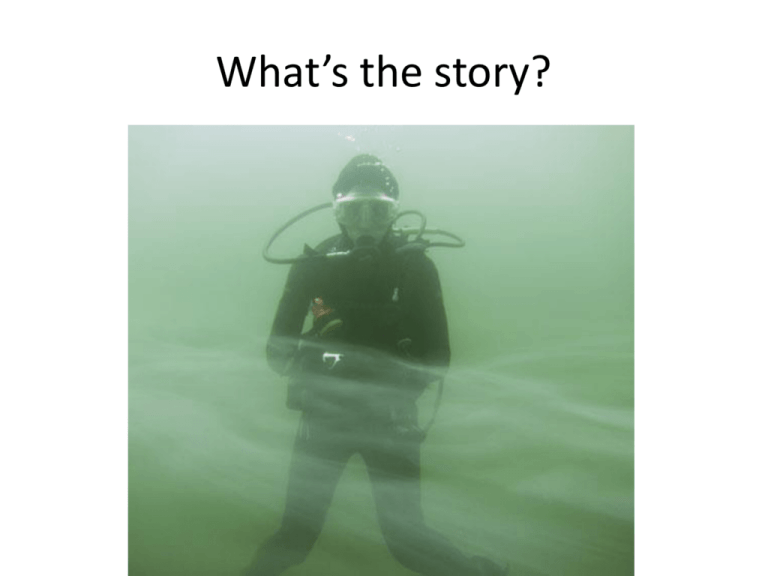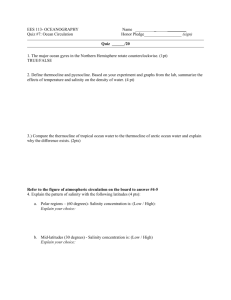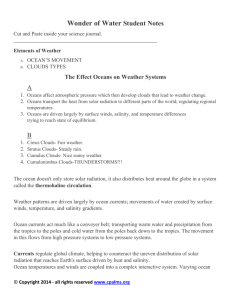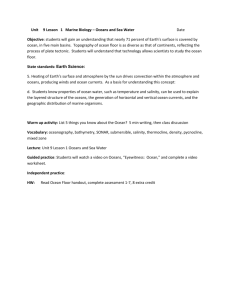2. Oceanic water
advertisement

What’s the story? Oceanic Water •Horizontal and vertical spatial variations in the temperature and salinity of ocean water. What do you think affects ocean temperatures? What affects ocean temperatures? 1. Latitude 2. Seasonal changes (tilt of the Earth) 3. Ocean depth 4. Salinity 5. Transfer of energy (through winds/ocean currents) Horizontal spatial variations Annotate your map to show (1) global variations in sea surface temperatures (2) the impact of ocean currents (look at the differences on the East and West sides of the continents) Annotate your map to show (1) global variations in sea surface temperatures (2) the impact of ocean currents (look at the differences on the East and West sides of the continents) (1) Sea surface temperature varies according to latitude – it is much warmer nearer to equatorial regions than in the poles (2) On the Western sides of continents, the cooler waters from ocean currents can be seen intruding towards the equator. Similarly (if not quite so clearly), the warmer waters of ocean currents flowing from the equatorial regions can be seen on the eastern side of several continents) Vertical spatial variations in ocean waters • Ocean water varies considerably with depth – two of the considerable variations are: • Temperature • Salinity (how salty the water is) How does ocean water temperature change with depth? Tasks: 1. Draw a sketch of the graph 2. Describe what happens to ocean water temperatures with increasing depth Between summer and winter, the ocean temperature change varies quite significantly between 500-1000m deep. Below this level the temperature decline is much slower. Thermocline • Definition: the zone of rapid temperature change in a vertical body of water. In the oceans the boundary usually occurs between 200m and 800m. • Approx. 90% of ocean water is found below the thermocline. Generally the surface waters do not mix with the deeper layers. As oceans get deeper... • Temperature decreases • BUT... • Salinity increases • Water density increases How does ocean water salinity change with depth? • Halocline - the zone of rapid salinity change in a vertical body of water. In the oceans the boundary usually occurs between 200m and 800m which is in a similar region to the thermocline. What is the relationship between temperature, salinity and water density in the oceans? Temperature High Cold water is denser than warm water + Saltier water is also denser + Temperature decreases with depth + Salinity increases with depth = An increase in water density as depth increases Low Low Salinity High How does ocean water density change with depth? • Pycnocline - the zone of rapid water density change in a vertical body of water. In the oceans the boundary usually occurs between 200m and 800m which is in a similar region to the thermocline and halocline. A few things to note... • The changes are seen more sharply in tropical areas than in polar regions because the surface temperatures are warmer near the equator • At great depths there is very little change in temperature between the equator and the poles Where in the world can you find...? • • • • • • The warmest waters? The coldest waters? The saltiest waters? The least salty water? The water with the highest density? The water with the lowest density?









